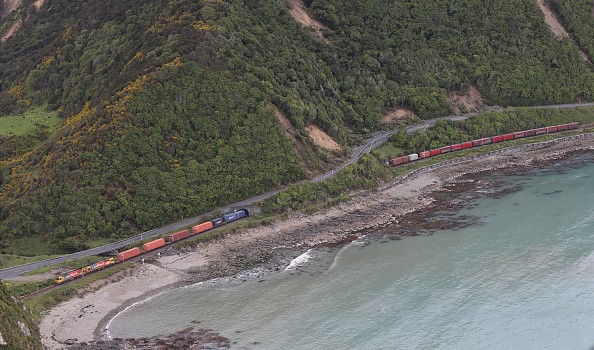According to a new study published on Monday, sea levels are rising twice as quickly as previously predicted in areas of New Zealand, putting the country's two major cities at risk decades sooner than planned.
Government-Backed Data

Government-backed data collected along the country's coastline showed that certain regions are already sinking 3-4mm (0.11-0.16 inches) every year, accelerating a long-foreseen hazard.
The estimates, which one expert described as "a little alarming," are the product of a five-year, government-funded study initiative called NZ SeaRise, which brought together dozens of local and international specialists.
Because of their prediction, authorities will have far less time than projected to implement climate adaptation strategies, including moving coastal towns.
While the global sea level is expected to rise about 0.5 meters (19.8 inches) by 2100, substantial parts of New Zealand may see a rise closer to 1 meter (39.4 inches) because the land is sinking at the same time, according to NZ SeaRise co-leader Tim Naish, a professor at Wellington's Victoria University.
It's terrible news for Wellington, the capital city, which may see a 30cm (11.8 inch) rise in sea level by 2040, a level not forecast until 2060.
Monumental Flood

At this pace, Wellington residents may expect once-in-a-century flood devastation every year.
"We don't have as much time to act," Naish explained. "You'll experience the effects of a potentially disastrous rise in sea level far sooner than we anticipated." Roads and buildings will be flooded. Yes, it's frightening, but there's still time, and I believe that's the best way to look at it."
According to data, the southeast coast of the more populous North Island is the most vulnerable, although several beach settlements and towns will be affected.
Auckland, the country's most populous metropolis with a 1.7 million population, is particularly vulnerable.
Auckland, the country's most populous metropolis with a 1.7 million population, is particularly vulnerable.
"We still have time," Naish replied, "but we don't have time to sit on our hands."
"If you're a municipal representative, a developer, or a decision maker in New Zealand's coastal communities, you need to start thinking about how you will adapt to that sea level rise right now."
Not Yet Too Late
Prime Minister Jacinda Ardern stated that adaption planning was already underway, with funding set aside to transfer some towns and infrastructure away from vulnerable beaches.
"The first port of call isn't always managed retreat," she told Radio New Zealand. "There are a variety of strategies that may be utilized."
"We're working with local governments and insurance to figuring out who pays for these alternatives." The costs will not be paid solely by one side."
Ardern stated that New Zealanders should not accept that future sea level rises would be unavoidable. Every person should do all possible to decrease emissions and mitigate the consequences of climate change.
The melting of land-based glaciers and the melting of the Greenland and Antarctic ice sheets all contribute to global sea level rise.
Related Article : Fear, Uncertainty, and Doubt Against Global Warming Remain High Despite Pressing Evidence
For similar news, don't forget to follow Nature World News!
© 2025 NatureWorldNews.com All rights reserved. Do not reproduce without permission.





